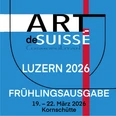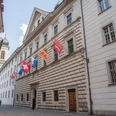- Photos & Map
How would you like to arrive?
- Call
- Website
- Good to know
- Nearby
- Book a guided city tour Book a guided city tour
Good to know
Target group
Individual guests
Groups
Families
Adults
Seniors
Equipment / Furnishings
Wheelchair accessible
Directions & Parking facilities
The bridge is located in the centre of Lucerne
Accessibility / Location
Central location
In the city
Social Media
Nearby



















